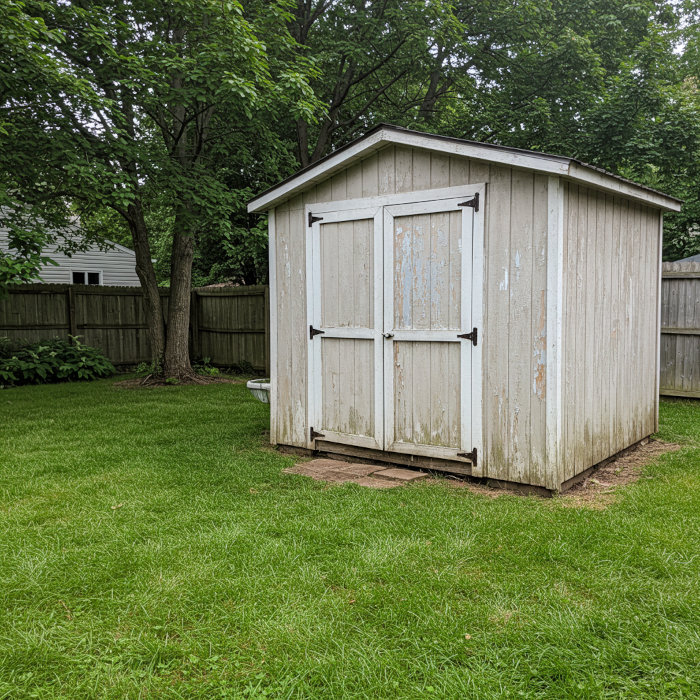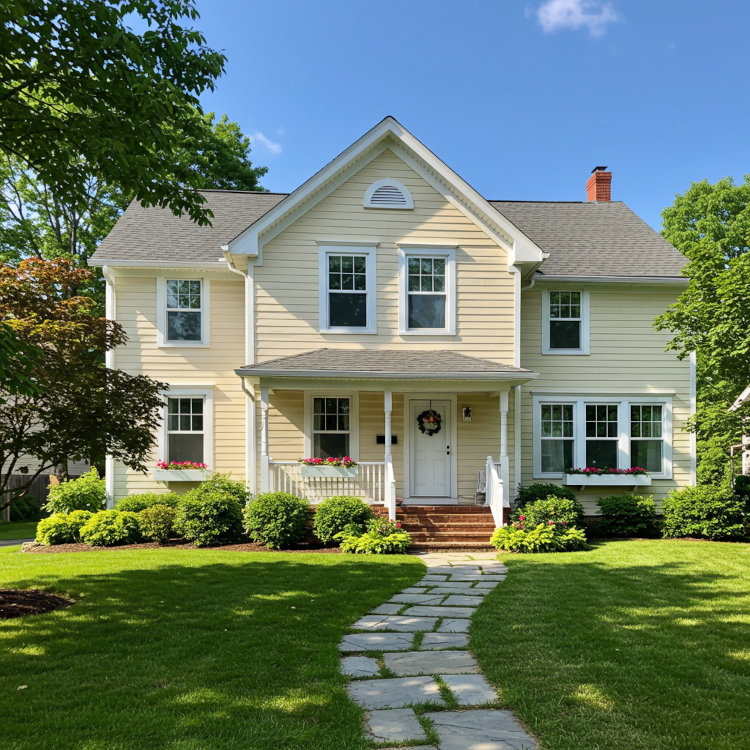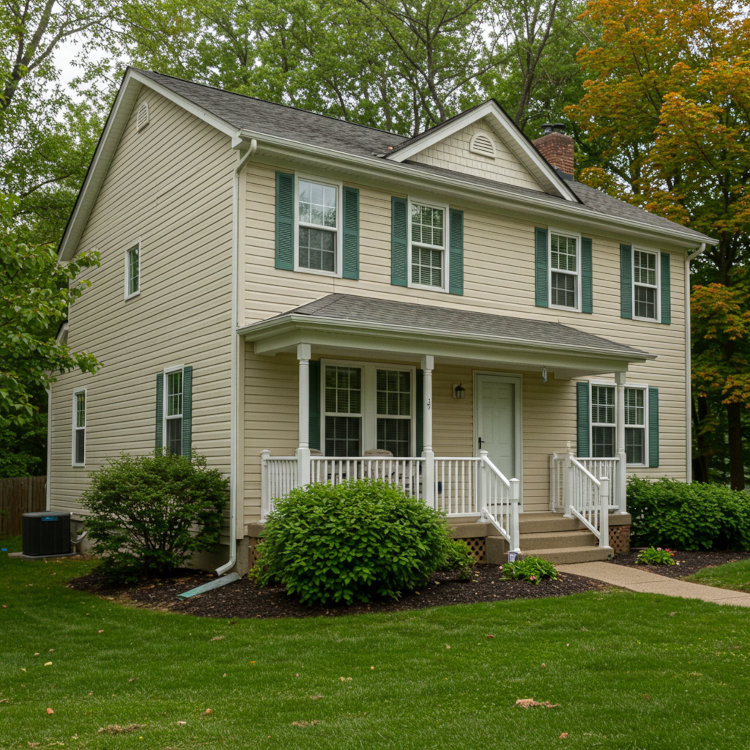As an Amazon Associate, I earn from qualifying purchases. Privacy Policy / Terms
As summer rolls on in Northeast Ohio, now is the time to look closely at your home’s exterior. Once fall hits, schedules fill fast, temperatures drop, and prep work becomes harder to do. If you’ve been putting off a fresh coat of paint or a pressure wash, this is the moment to get ahead of it. Your home may already be telling you it’s time. Here’s how to spot the warning signs of failing paint and why summer is the best time to act.
Peeling, Flaking, or Bubbling Paint
Paint’s number one job is protection. If it’s peeling away in strips or bubbling up after a rainy stretch, it’s no longer doing its job. These are classic signs of moisture getting under the surface, either from poor sealing or natural wear over time. Once water gets in, it’s just a matter of time before the wood beneath starts to rot.
You might notice this most on trim, windowsills, or siding that’s in direct sunlight or exposed to rain. These areas are under constant stress, and even the best paint jobs don’t last forever. If you see cracking paint or blistering areas, it’s a red flag that repainting should be on your pre-fall checklist.
Faded or Washed-Out Color
Even if your paint isn’t physically peeling, it may still be failing. Fading is usually a sign of UV breakdown, and while Ohio doesn’t get the blazing sun of the Southwest, our seasonal shifts wear down pigment over time. If your home’s once-rich colors look pale, chalky, or uneven, it’s not just an eyesore. It’s a sign the paint is no longer offering full protection.
This is especially important for darker colors, which fade faster than lighter shades. A dull finish doesn’t reflect heat well either, which can impact energy efficiency. A fresh coat of high-quality paint can restore curb appeal and add years of protection, and summer is the ideal time to get it done.
Cracked Caulk or Gaps in Joints
Your exterior paint and caulk work together as a system. When one fails, the other isn’t far behind. Check corners, window frames, and siding joints for cracked or shrinking caulk. If you see any gaps forming, that’s where cold air and moisture will get in when the temperature drops.
Replacing caulk and sealing these joints before repainting helps weatherproof your home and keep heating costs down. This is a great time to combine repainting with minor repairs, especially before those gaps freeze and widen with the first frost.
Visible Mold, Mildew, or Algae
If you see dark green streaks, black spots, or grayish residue creeping up your siding, that’s mold or mildew — and it’s more common in shaded areas that stay damp. Once it takes hold, it can weaken the paint film and stain surfaces permanently.
This is where pressure washing makes a big difference. Cleaning your home’s exterior not only improves appearance but also prevents microbial growth from doing long-term damage. In many cases, a good pressure wash followed by repainting can completely refresh your home’s finish and keep mold at bay before the wetter months arrive.
Wood That’s Swollen, Soft, or Splitting
Paint isn’t just for looks; it seals wood from absorbing water. When that barrier breaks down, siding and trim can swell, soften, or begin to splinter. If you tap on areas that sound hollow or feel spongy under pressure, that’s a warning sign.

Don’t wait until fall storms hit. Addressing this in summer gives you time to replace damaged boards, let them dry out fully, and repaint everything properly, with plenty of drying time between coats. If your exterior wood feels even slightly compromised, summer is your best window to fix it right.
Why Summer Painting Matters
Once temperatures fall below 50 degrees consistently, paint may not cure correctly. Early fall painting can work if the weather stays mild, but summer gives you a longer runway. Warm days and low humidity are ideal for pressure washing, sanding, caulking, and sealing, all necessary steps for a long-lasting finish.
Plus, this is the season when your home is seen the most. Barbecues, backyard parties, and neighborhood walks mean more people noticing your curb appeal. A clean, fresh paint job isn’t just smart, it’s rewarding to enjoy before snow covers everything.
Where Pressure Washing and Sealing Fit In
If your paint is in decent shape but looks dirty or dull, pressure washing alone might do the trick. It clears off dirt, pollen, mildew, and spider webs that dull your home’s appearance. For decks, patios, and fencing, this is also the season for staining and sealing, especially after they’ve had a chance to dry out from spring rains.
Sealing wood surfaces helps prevent cracking, fading, and moisture absorption as winter approaches. Doing it now means your outdoor spaces will be better protected come snowfall, and you’ll enjoy that rich, finished look all season.
Final Thoughts
If you’ve spotted any of these signs: peeling, fading, bubbling, or mildew, it’s time to make a plan. A little proactive work now saves you from major repairs down the road, especially when temperatures drop and weather gets unpredictable.
Don’t wait until you’re rushing to get things done in October. Take advantage of the dry summer stretch and give your home the care it needs, whether that means a fresh coat of paint, a deep pressure wash, or resealing vulnerable areas. Your home will look better, last longer, and stay protected through the seasons ahead.
Views Expressed Disclaimer
The views, opinions, and information presented in this article are for informational purposes only and do not necessarily reflect the official policies or positions of Chagrin Falls Painting. While every effort has been made to ensure accuracy, Chagrin Falls Painting is not liable for any errors, omissions, or decisions made based on the content provided. Readers are encouraged to consult professionals for specific advice or assistance related to their unique circumstances.








